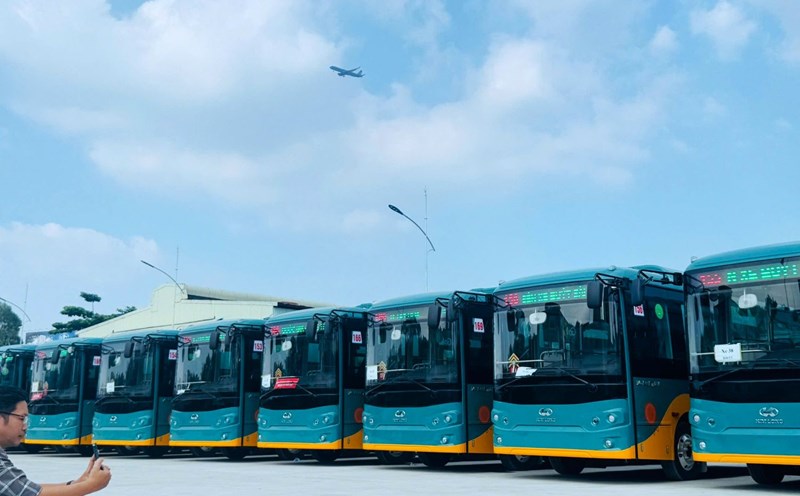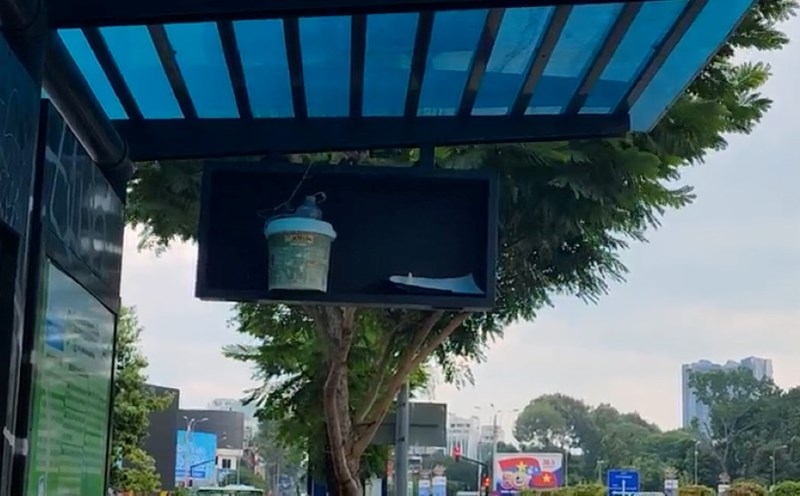Public transport goes first, private vehicles follow
From August 1, Ho Chi Minh City will put into operation 37 subsidized bus routes under the form of bidding to select new operating units. Of the 600 vehicles serving these routes, nearly 300 use electricity or compressed natural gas (CNG).
Currently, the city's bus network has more than 2,200 vehicles, of which about 700 vehicles use electricity and CNG, the rest still use gasoline and oil. With this new car addition, the rate of buses using clean fuel in Ho Chi Minh City will reach nearly 50%.
The Ho Chi Minh City Institute for Development Studies (HIDS) has completed the project to convert gasoline-powered motorbikes to electric vehicles for delivery forces and technology drivers.
The goal of the project is to complete the conversion of 80% of the total of about 400,000 technology motorbikes in operation by 2027, equivalent to 320,000 vehicles. The rest will be implemented in 2028. On this basis, HIDS proposed that Ho Chi Minh City completely ban gasoline vehicles from participating in technology car calling services from 2029.
Both groups of vehicles are part of the overall Vehicle Emission Control Project chaired by the Ho Chi Minh City Department of Construction.
In phase 1, the city focuses on issuing roadmaps, policies and mechanisms to support the development of charging station infrastructure, converting buses to green energy, aiming for a goal of 100% of buses completely converting by 2030. After Ho Chi Minh City merged with Binh Duong and Ba Ria - Vung Tau, the Department of Construction is currently finalizing the project with an expansion scale to apply to the entire new city, expected to be submitted to the Ho Chi Minh City People's Council in the fourth quarter of 2025.
Phase 2 of the project will focus on policies to support the purchase, exchange of used cars and incentives when switching to electric cars. The city also studies traffic zoning, prioritizing electric vehicles and green energy in the center of Ho Chi Minh City, Can Gio and Con Dao.
Charging station infrastructure - the key to green transportation
According to statistics, Ho Chi Minh City (before the merger) is managing more than 9.6 million vehicles, including 8.6 million motorbikes and more than 1 million cars. After the merger, Ho Chi Minh City will have a scale of more than 11 million vehicles.
In addition to the policy of supporting people and businesses, the development of charging station infrastructure is considered a key factor to promote the process of converting vehicles to electricity.
According to MSc. Le Thanh Hai - Director of HIDS Economic Application Consulting Center, the charging infrastructure in Ho Chi Minh City is currently still in its infancy, mainly invested by small private enterprises, and no public projects have been implemented. The city is also facing great pressure on the power grid, because high-power DC fast charging stations (up to 350kW) can cause overload during peak hours. Along with that, the static traffic system of Ho Chi Minh City has not met the requirements in time, lacking parking spaces, wharves...
The Ho Chi Minh City Institute for Development Studies proposes that by 2028, Ho Chi Minh City needs to develop about 3,000 charging stations and battery swapping stations for electric vehicles, prioritizing placement in convenient locations such as gas stations, public parking lots, shopping malls, parks, etc.
In parallel, the Public Transport Management Center (Ho Chi Minh City Department of Construction) is coordinating with relevant units to deploy investment in 19 large charging stations serving electric buses, taking advantage of existing land funds at the wharves. These stations will provide power to nearly 700 electric vehicles on 47 subsidized bus routes, expected to be put into operation simultaneously from 2027. The total investment capital is about 400 billion VND.
The Ho Chi Minh City Department of Industry and Trade said that it will coordinate with the electricity industry to ensure a stable supply source for charging stations, while upgrading the power grid in areas at risk of overload.











